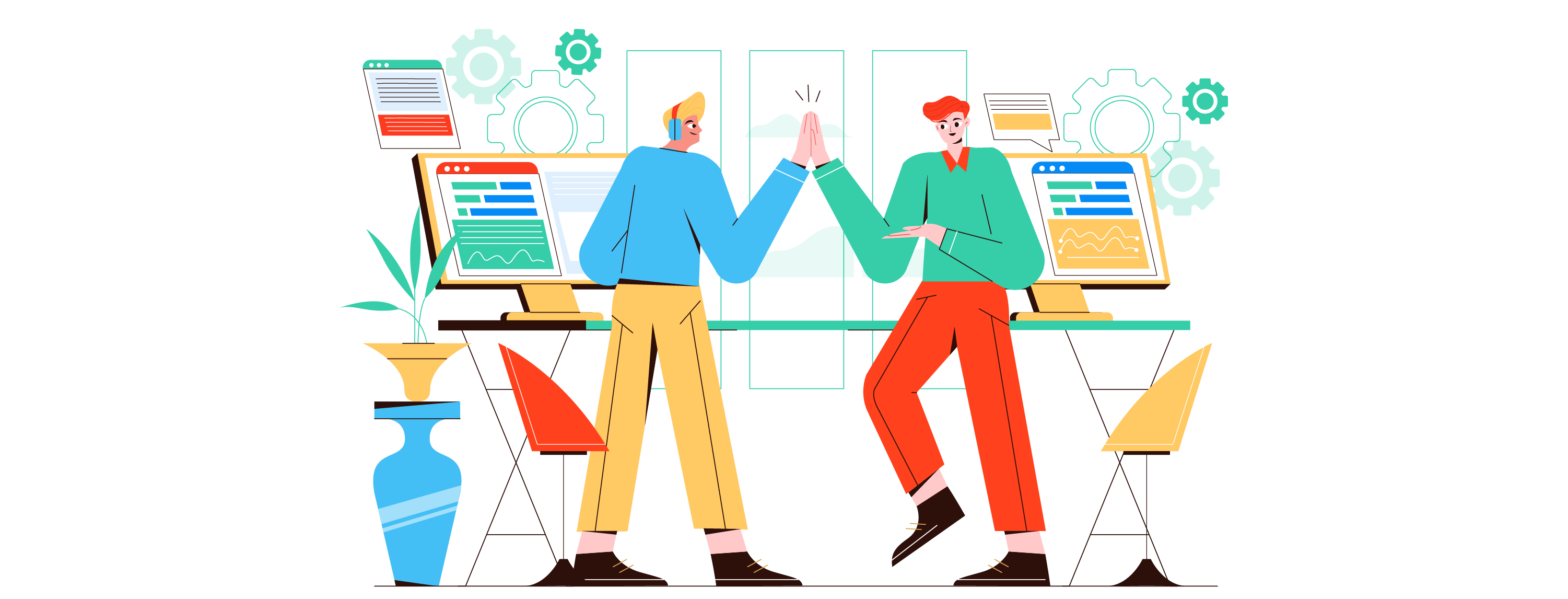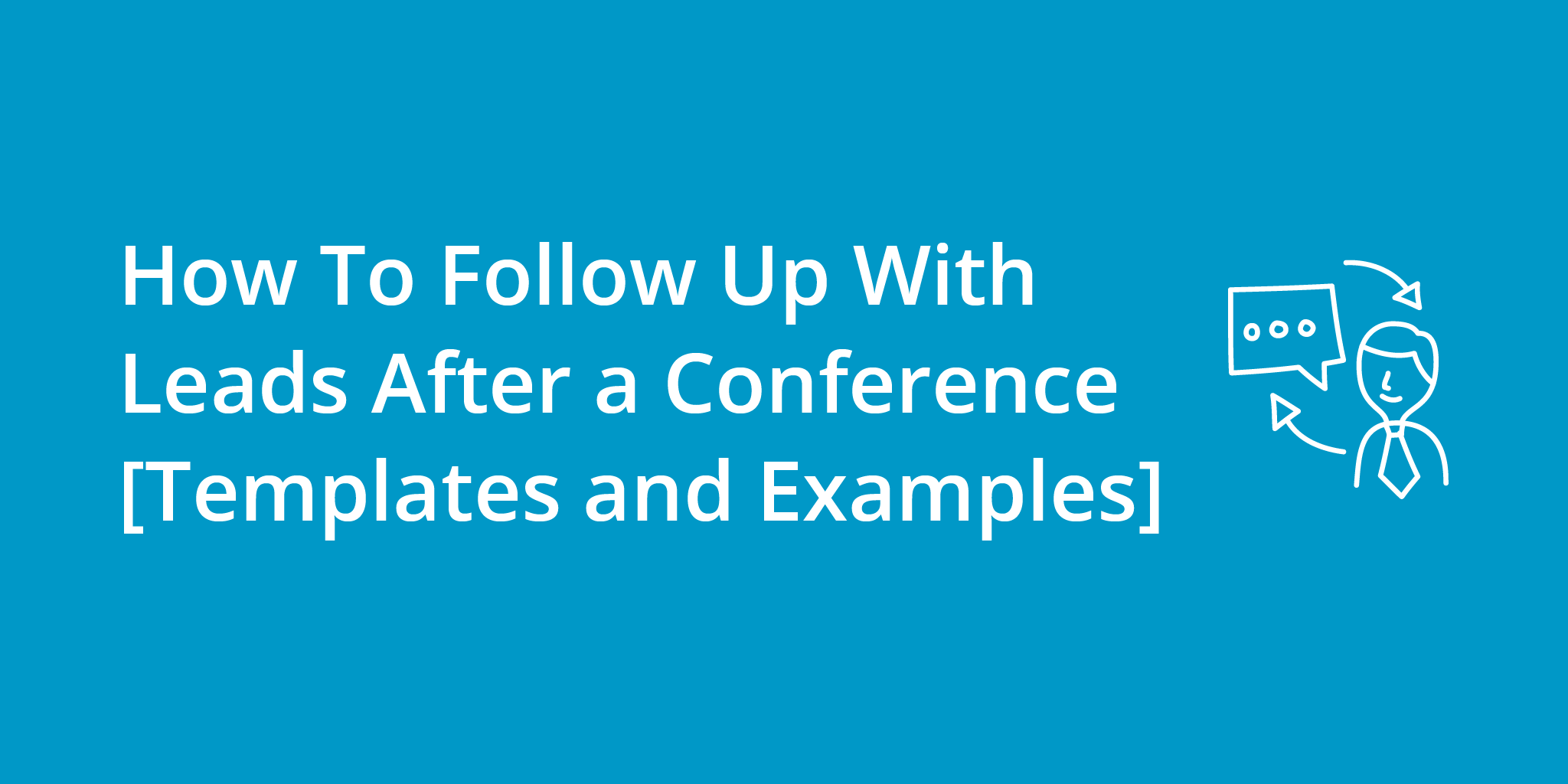You recently went to a great conference where you met a lot of interesting people who are potentially promising leads for your business. But what comes after that?
How do you ensure that you don’t merely fade into memory for them? The solution lies in efficiently following up with them at the proper time and over some productive conversations.
In this article, we’ll delve into the significance of post-conference follow-ups and equip you with practical strategies and tailored templates designed to ensure your brand remains a prominent fixture in the minds of attendees.
Why It’s Important to Follow Up After a Conference
In 2019, Cvent, a leading event technology provider, carried out an insightful study exploring attendee interactions and their viewpoints on post-event follow-ups. Let’s take a closer look at their findings:
Making a Good Impression
Post-conference follow-ups allow you to make a lasting impression on your leads – something important to over 22% of attendees, according to Cvent. By reaching out to them, you’re demonstrating your interest in their needs and showing that you’re proactive and attentive.
Jogging Their Memory of You
With so many interactions during a conference, it’s easy for attendees to forget who they met. Following up jogs their memory of your conversation, helping you stand out from the crowd.
Close to half of the attendees desired contact while the memory of the business was still fresh in their minds.
Keeping Your Brand Front and Center
Just under half of attendees stated they weren’t looking to meet anyone in particular – that’s a lot of untapped potential!
Consistent communication with your leads keeps your brand at the forefront of their minds, increasing the chances of them choosing your products or services.
Securing Leads
According to the Cvent study, most attendees didn’t like to experience a “hard sell”, but an effective follow-up can turn a lukewarm prospect into a solid lead, increasing your chances of closing a deal.
The Importance of Following Up With the Right Timing
Timing is critical when it comes to following up with leads after a conference. Studies have shown that reaching out within 24 hours of the event dramatically improves your chances of receiving a favorable response – this is because your interaction is still fresh in your lead’s mind.
According to a study by the Harvard Business Review, companies that contact potential leads within an hour are nearly seven times more likely to qualify the lead compared to those who wait longer than an hour and over 60 times more likely than companies that wait 24 hours or more.
This emphasizes the importance of striking while the iron is hot and reaching out to your leads as soon as possible after the conference.

The Best Follow-Up Strategies for After the Conference
Having underscored the vital role of not only following up but doing so effectively, let’s explore a selection of proven tactics that can transform casual conversations into loyal customers:
Segregate and Categorize Leads
Divide your leads into cold, warm, and hot categories based on their level of interest in your product or service. This will help you tailor your follow-up approach accordingly.
For example:
- Cold leads: Send an email introducing your company and offerings.
- Warm leads: Send a personalized email referencing your conference conversation.
- Hot leads: Schedule a call or meeting to discuss their needs further.
Create a Mailing List
Create a comprehensive mailing list encompassing all the leads you’ve encountered during the conference. This not only helps maintain organization but also streamlines your follow-up process.
Incorporate links within your emails that, upon interaction, prompt an automated response from your CRM and auto-dialer, further enhancing your lead engagement strategy.
Publish Content About the Conference
Create a blog post or article about your experience at the conference, including key takeaways and interesting moments. Optimize it for SEO and include a call-to-action (CTA) inviting leads to get in touch with you.
Craft Effective Follow-Up Emails
Send follow-up emails that reintroduce, remind, and re-engage your leads. Be consistent in your messaging, and make sure to include a clear CTA.
Use these email templates:
- Cold lead: “Hi [Name], it was great to meet you at [Conference]. I wanted to introduce our company, [Your Company], and our services [Brief Description]. Please let me know if you’d like to learn more. Best, [Your Name]”
- Warm lead: “Hi [Name], it was a pleasure speaking with you at [Conference] about [Topic]. I’d love to continue our conversation and explore how [Your Company] can help with [Lead’s Needs]. Let’s set up a call to discuss this further. Best, [Your Name]”
- Hot lead: “Hi [Name], I enjoyed our conversation at [Conference] and believe [Your Company] can provide a great solution for [Lead’s Needs]. I’d like to set up a call or meeting to discuss this in more detail. Are you available [Date/Time]? Best, [Your Name]”

Personalize Your Approach
When following up, make sure to personalize your approach to each lead. Mention specific details from your conversation or reference their unique needs.
This will make your message more memorable and show that you genuinely care about their concerns.
For example:
- “Hi [Name], I remember you mentioned at [Conference] that your team has been struggling with [Specific Challenge]. Our solution at [Your Company] might be just what you need to overcome this hurdle. Let’s discuss how we can help. Best, [Your Name]”
Maintain Consistency and Find the Right Balance
One of the key aspects of an effective follow-up strategy is striking the perfect balance between consistency and over-communication.
While regular follow-ups are crucial to keeping your brand top of mind, bombarding your leads with excessive messages may overwhelm them and harm your chances of building a meaningful relationship.
To find the right balance, consider setting up a follow-up schedule with an appropriate cadence based on the lead’s engagement level and the type of interaction you had at the conference. This ensures you’re staying connected without overwhelming them.
For example, you might create a follow-up sequence like this:
- Day 1: Send a personalized email referencing your conference conversation.
- Day 3: Share a relevant article or resource that adds value to the lead.
- Day 7: Reach out with a gentle reminder or an invitation to a webinar or event.
- Day 14: Send a final follow-up email expressing your willingness to reconnect and discuss potential collaboration.
By maintaining consistency and finding the right balance, you can effectively engage your leads without crossing the line into excessive communication.
Track and Analyze Your Follow-Up Efforts
It’s essential to effectively monitor and evaluate your follow-up activities if you want to know which tactics produce the best outcomes.
You can use the information from your follow-up interactions to improve your strategy and your future initiatives by keeping a record of them.
In this context, a customer relationship management (CRM) system is a crucial tool. It gives you a central location to keep important data and allows you to methodically arrange and manage your interactions with leads.
A CRM not only aids in tracking your follow-up activities but also provides information on the efficacy of your tactics. This gives you the ability to make data-driven decisions, assuring ongoing development of your follow-up strategies.
Final Thoughts
And there you have it – a comprehensive guide to help you master the art of following up with leads after a conference.
Use the tips, strategies, and templates provided in this article to make a lasting impression and set the stage for successful business relationships.
Reach out today and uncover the benefits of incorporating an auto-dialer to expedite engagement with leads who respond positively to your follow-up endeavors.
By harnessing the combined strengths of a CRM and an auto-dialer, you’ll be well-positioned to nurture and convert leads, ultimately propelling your company’s growth.
Good luck, and happy networking!



